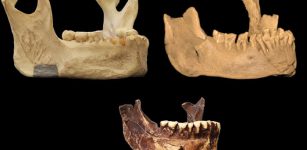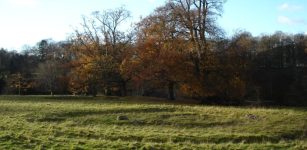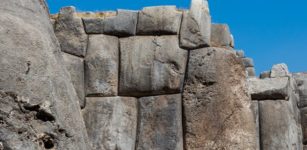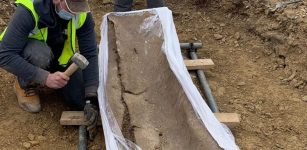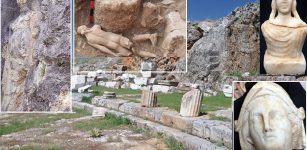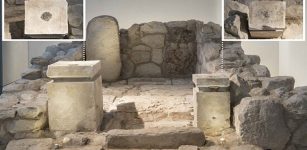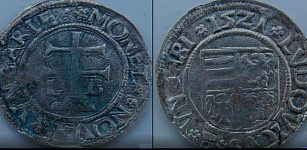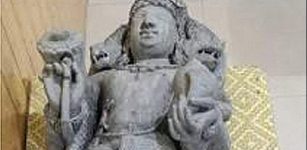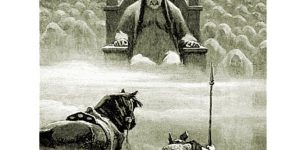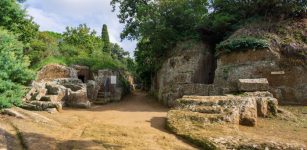5,000-Year-Old Arminghall Henge In Norwich Reveals Some Of Its Secrets
Conny Waters - AncientPages.com - Arminghall Henge in Norwich, UK was first seen from the air in 1929, and was excavated in 1935. The 5,000-year-old timber circle is one of the most important prehistoric discoveries in Norfolk.
" The central horseshoe pattern of dark patches represented sockets for huge wooden posts, probably whole mature tree trunks. The site has been dated by pottery and charcoal to four or five thousand years ago, and it may have been used intermittently for a considerable period of time from the Late Neolithic to Bronze Age. It has been classified as a henge, and presumably had a ceremonial function." 1
The late Neolithic to Bronze Age monument is close to many other prehistoric sites, including burial barrows and mines. Credit: Cambridge University / Antiquity Journal
Now for the first time since the 1930s, scientists have excavated the ancient timber circle burnt down during a Neolithic midwinter solstice, and the results of the study's results shed more light on our ancestors' beliefs.
According to archaeologist Andy Hutcheson from the University of East Anglia's Sainsbury Institute, the blaze would have created "a hell of a bonfire which burnt for days," and it was deliberately set alight during a winter gathering.
Results from radiocarbon analysis conducted in 2010 indicate Arminghall Henge was built between 3525 B.C. to 2700 B.C.
Eight 5.5 tonne (12,124lb) posts about 1m (3ft) in diameter were sunk into the ground.
They also dug trenches in the earthworks and in both areas, like the 1930s' dig, they found a layer of charcoal from a fierce fire. Credit: Andy Hutcheson
"They were at least 10m (32ft) above ground, so the circle would have been pretty impressive. A huge amount of people would have been needed to bring the timbers to the site and put them in place. It was also sited to take advantage of the setting sun on the midwinter solstice, like Stonehenge, " Hutcheson said.
As reported by the BBC, "Arminghall Henge was built on land above a valley where three rivers meet.
Dr. Hutcheson believes it was deliberately built on raised ground, so it could be easily seen and by a confluence of rivers for ease of access.
The post holes were angled to help ease the tree trunks in and they would have been pulled upright by "lots of people and lots of rope", said Dr Hutcheson. Credit: Andy Hutcheson
"Another new thing we've found is there was more of an escarpment in the past, so from the river valley the henge would have looked much more spectacular," he said.
The 12m (39ft) timber circle was surrounded by a later 76m (249ft) diameter earthwork henge.
Charcoal was found in the post holes and the inner earthwork ditch's lower layers during the excavation, which volunteers from the mental health and heritage charity The Restoration Trust helped.
A large amount of Roman debris suggests the site continued to be used for some purpose during the Roman-British period. Credit: Andy Hutcheson
Dr. Hutcheson said they believe the timber circle was deliberately burnt and its remains added to the earthwork monument.
"Archaeologists now think that this sort of thing was seasonal and therefore to do with the solstice It would have been a hell of a bonfire which burnt for days," Hutcheson added.
Written by Conny Waters - AncientPages.com Staff Writer






